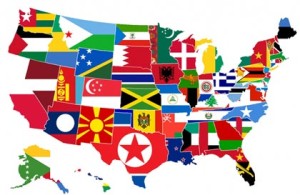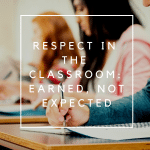 The United States is growing ever more diverse in languages, religions and ethnicity and school districts are working (with varying levels of success) to adjust to their changing communities. ESOL teachers are often in the position of go-between for their students and the larger culture, which can be a little awkward when the holidays come around. ELL students may or may not know the reasons for all those days off, or they may miss school because their holy days are not part of the school calendar.
The United States is growing ever more diverse in languages, religions and ethnicity and school districts are working (with varying levels of success) to adjust to their changing communities. ESOL teachers are often in the position of go-between for their students and the larger culture, which can be a little awkward when the holidays come around. ELL students may or may not know the reasons for all those days off, or they may miss school because their holy days are not part of the school calendar.
The first step is simply knowing what holidays are coming up and when. This is a good multicultural calendar that runs through many of the common holidays from different religions and cultures. It’s worth familiarizing yourself with when Ramadan, the Lunar (Chinese) New Year and Diwali come around, but keep in mind that the timing of these holidays are not based on the Western calendar and they may come at different at times every year.
Furthermore it’s important not to assume that the families of ELL students aren’t aware of the larger culture. Christmas in particular is a cultural juggernaut in the USA and you’d be hard pressed to find a kid who’s been in America for more than a few hours who’s unaware Christmas means new toys.
Respecting diversity means drawing on the backgrounds of all students in the classroom. A good way to be proactive is to learn as much as you can about how your students celebrate their culture and religions. Families may be secular or religious, observant or uninterested. Present your students with as many different voices as you can in the books you read and the stories you tell. Websites like Goodreads can lead you to books with a variety of voices that students may have never heard or seen. Students are more likely to share their ideas and connections when they see themselves reflected in literature and class discussion.
Be aware of how content area teachers or classroom teachers address these topics as well. Offer to do a read-aloud or lead a lesson as topics arise over the course of the year. Social studies lessons tend to lend themselves to these topics, but there are plenty of connections in literature, foreign languages and even mathematics (algebra is from Arabic, and the concept of zero as a placeholder was conceived in ancient Babylon – modern day Iraq – and developed conceptually in ancient India).
Fundamentally I believe it’s important to see all our students’ backgrounds and cultures as belonging. When we start to differentiate between the “American” kids and the ESOL students, we ignore the historical fact that this nation was founded by immigrants. The English-speaking history of our nation is conceived of as “true”, but it is not a complete history. Working with ELL students gives teachers a chance to expand that story to include more voices.





Leave a comment